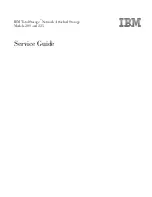
Timecode (option)
Abstract
The transmission of coded timing signals began to take on widespread importance
in the early 1950´s. Especially the US missile and space programs were the forces
behind the development of these time codes, which were used for the correlation of
data. The definition of time code formats was completely arbitrary and left to the
individual ideas of each design engineer. Hundreds of different time codes were
formed, some of which were standardized by the "Inter Range Instrumentation
Group" (IRIG) in the early 60´s.
Except these "IRIG Time Codes", other formats like NASA36, XR3 or 2137 are still
in use. The board GPS167-TC however generates the IRIG-B, AFNOR NFS 87-500
code as well as IEEE1344 code which is an IRIG-B123 coded extended by
information for time zone, leap second and date. Other formats may be available on
request.
Principle of Operation
The Board GPS167-TC has been designed for the generation of IRIG, AFNOR and
IEEE1344 standard time codes. Apart from the digitally generated amplitude-
modulated code, GPS167-TC also provides the unmodulated DC-Level shift code.
The modulated sine wave carrier and the board´s internal time pattern are derived
from the radio clock´s disciplined oscillator.
Block Diagram Timecode
143
microcontroller
modulator
EPLD
D/A converter
driver
50 unbalanced
Ω
digital
sinewave
generator
timecode
10 MHz
modulated timecode
unmodulated timecodes
high- and low-active
PPS
Содержание M900
Страница 1: ...Technical Information Operating Instructions M900 GPS PZF Redundant SHS ...
Страница 21: ...Assembly with CN UB E 21 ...
Страница 48: ...48 ...
Страница 64: ...Configuration Ethernet 64 ...
Страница 69: ...Configuration Notification 69 ...
Страница 74: ...Configuration Security 74 ...
Страница 87: ...Configuration Local 87 ...
Страница 95: ...Configuration Statistics 95 ...
Страница 144: ...IRIG Standard Format 144 ...
Страница 145: ...AFNOR Standard Format 145 ...
















































